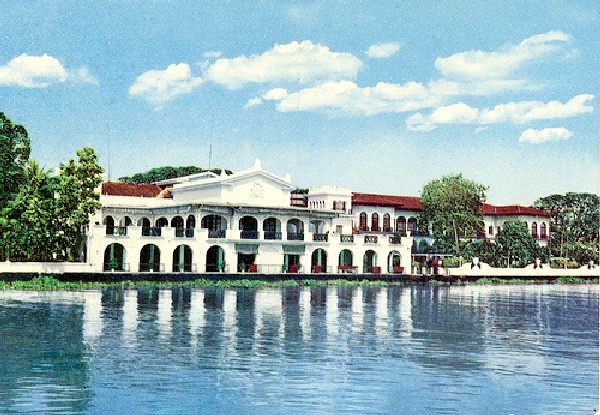Metro Manila, others under Signal No. 1
(Eagle News)–Signal No. 2 is in effect over Catanduanes and other areas as “Quinta,” with international name “Molave,” intensified into a tropical storm and moved closer to Bicol.
The Philippine Atmospheric Geophysical and Astronomical Services Administration said apart from Catanduanes, Camarines Norte, Camarines Sur, Albay, Sorsogon, the northern portion of Masbate (Baleno, Aroroy, Masbate City) including Burias and Ticao Islands, the southern portion of Quezon (Perez, Alabat, Quezon, Calauag, Guinayangan, Tagkawayan, Buenavista, San Narciso, San Andres, San Francisco, Mulanay, Catanauan, Lopez, General Luna, Macalelon, Gumaca, Pitogo, Unisan, Plaridel, Atimonan, Agdangan), and Marinduque are under the tropical cyclone wind signal.
The rest of Masbate, the rest of Quezon, Laguna, Rizal, Batangas, Cavite, Metro Manila, Bulacan, Pampanga, Bataan, the southern portion of Zambales (San Marcelino, San Felipe, San Narciso, Castillejos, Subic, San Antonio, Olongapo City, Botolan, Cabangan), Occidental Mindoro, Oriental Mindoro, and Romblon, all in Luzon; and Northern Samar, the northern portion of Samar (Calbayog City, Santa Margarita, Santo Nino, Almagro, Tagapul-An, Gandara, San Jose de Buan, Matuguinao, San Jorge, Tarangnan, Pagsanghan), and the northern portion of Eastern Samar (Maslog, Dolores, Oras, Jipapad, Arteche, San Policarpo), all in Visayas, on the other hand, are under Signal No. 1 with “Quinta” estimated 345 km east of Virac, Catanduanes.
It is packing maximum sustained winds of 65 kph near the center and gustiness of up to 80 kph, and is moving west at 20 kph.
PAGASA said “Quinta” is expected to make landfall over the Catanduanes-Albay-Sorsogon area this afternoon or evening, but not before again intensifying into a severe tropical storm.
It will then cross the Southern Luzon area until tomorrow afternoon or evening, and then turn more west-northwest over the West Philippine Sea.
It is likely to exit the Philippine Area of Responsibility (PAR) on Tuesday afternoon.
After crossing the Philippine archipelago, this tropical cyclone will continue intensifying over the West Philippine Sea, reaching typhoon category by Tuesday evening.
Today until tomorrow morning, “Quinta” is expected to bring moderate to heavy with at times intense rains over Bicol Region, CALABARZON, Aurora, Occidental Mindoro, Oriental Mindoro, Romblon, Marinduque, Calamian Islands, Northern Samar, Eastern Samar, Samar, Biliran, Aklan, and Antique.
The tail-end of a frontal system will also bring moderate to heavy with at times intense rains over the northern portions of mainland Cagayan including Babuyan Islands, Apayao, and Ilocos Norte.
PAGASA said both weather systems will bring light to moderate with at times heavy rains over Metro Manila, Cordillera Administrative Region, Zamboanga Peninsula, Bangsamoro, Northern Mindanao, Caraga, and the rest of Visayas, Cagayan Valley, Central Luzon, and MIMAROPA.
“Flooding (including flash floods), rain-induced landslides, and sediment-laden streamflows (i.e. lahars) may occur during heavy or prolonged rainfall especially in areas that are highly or very highly susceptible to these hazards” PAGASA said.
Gale conditions will be experienced in areas under signal number 2 while strong breeze to near gale conditions will be experienced in areas under signal number 1.
In other areas, strong breeze to gale conditions will also prevail over Batanes, Babuyan Islands, and the northern coastal areas of Ilocos Norte and mainland Cagayan due to the northeasterly surge.
According to the weather bureau, today, rough to very rough seas will prevail over the entire seaboards of Northern Luzon and the seaboards of Aurora, Zambales, northern Palawan including Calamian and Kalayaan Islands, and all areas under signal number 2 and 1.
Sea travel is risky over these waters, especially for small seacraft.
Moderate to rough seas will be experienced over the other seaboards of the country today.








